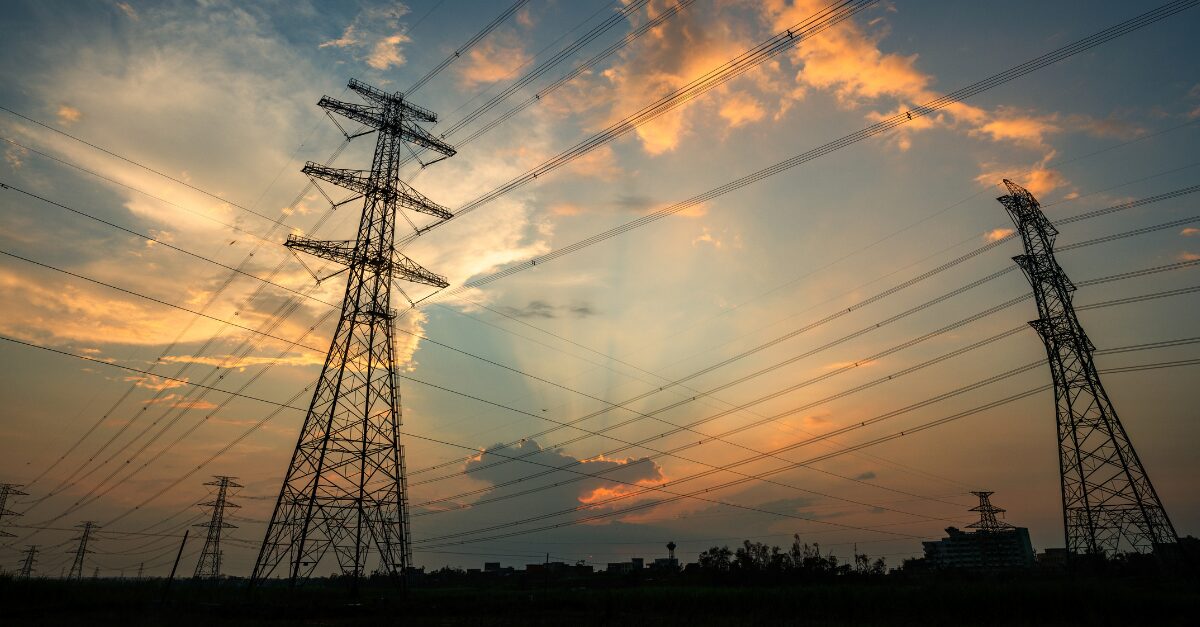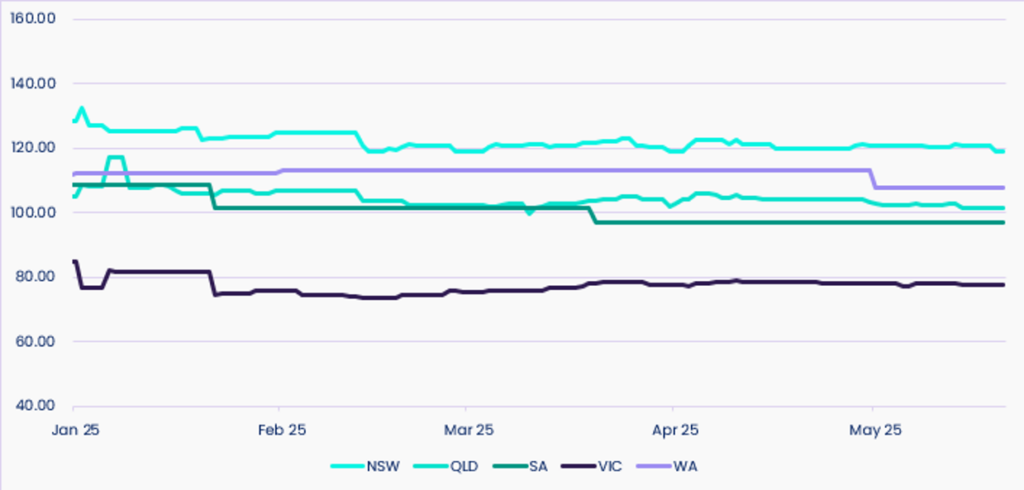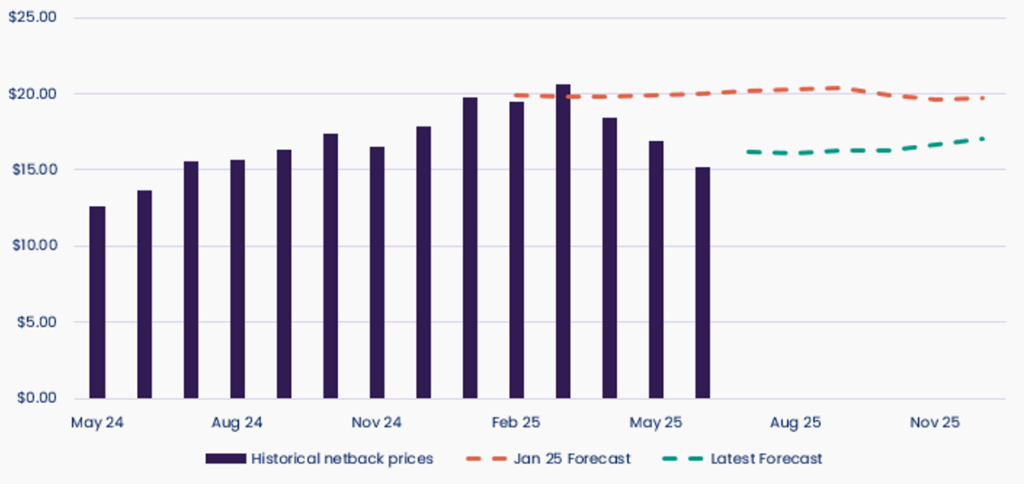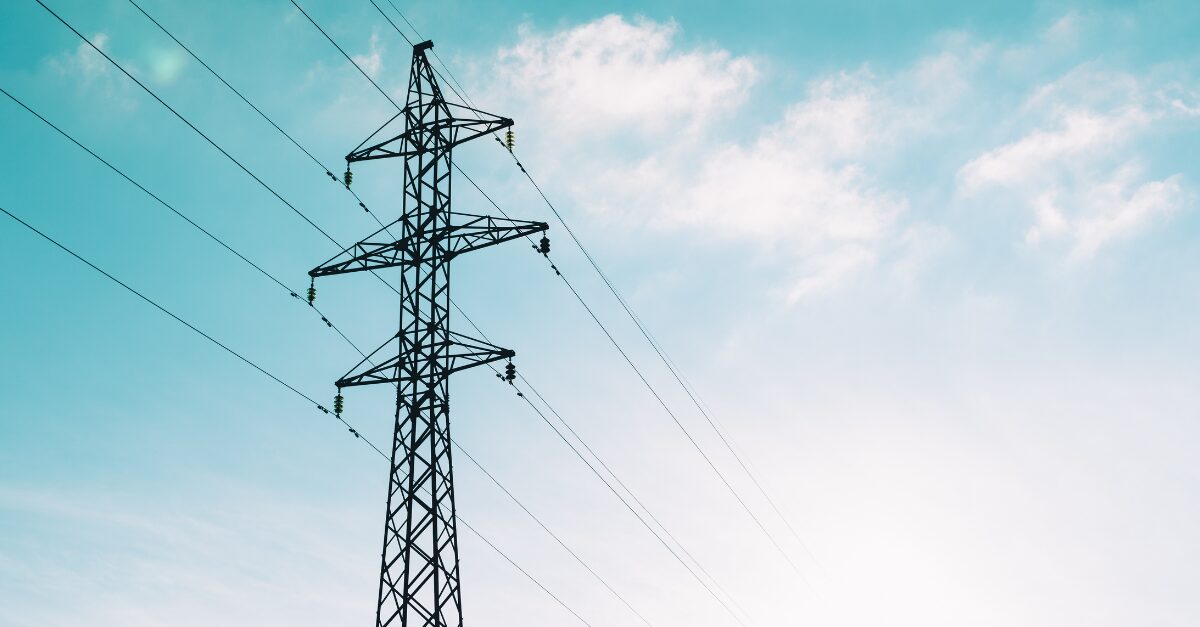
After quite a volatile start to the year, electricity markets across the East Coast have steadied throughout May. Futures prices in NSW, QLD, and VIC have remained relatively flat, with only South Australia recording a modest decline, thanks to its strong renewable generation mix.
As winter looms and broader energy policy debates intensify, now is the time for businesses to keep a close eye on contract opportunities, forward pricing trends, and emerging supply-side pressures.

ASX Energy Futures ($/MWh)

LNG Netback Prices
EnergyAustralia recently issued an apology to over 400,000 customers for potentially misleading claims about its "go neutral" carbon offset program. The company settled a legal challenge alleging greenwashing, marking a significant precedent in Australia's energy sector.
This highlights just how critical transparency and traceability are in environmental claims. Businesses that rely on carbon offsetting or green credentials should ensure they can verify claims and avoid overstating impact.
If your business is making environmental or sustainability claims, whether it's carbon neutrality, renewable usage, or emissions reduction, you need to be able to back them up. Our team at Utilizer can help assess your current sustainability positioning and support credible reporting to maintain trust with your stakeholders.
The Australian Building Codes Board (ABCB) has released proposed updates to the National Construction Code (NCC) 2025, introducing enhanced energy efficiency requirements for commercial buildings. These changes are part of the ongoing 'Trajectory for Low Energy Buildings' policy, aiming to reduce greenhouse gas emissions and support Australia's commitment to net-zero by 2050.
Key Updates:
These updates signify a significant shift towards sustainable building practices in the commercial sector. For C&I businesses, this presents both a challenge and an opportunity to invest in energy-efficient infrastructure that can lead to long-term cost savings and compliance with evolving regulations.
What Does This Mean for You?
If you're planning a new commercial build or major upgrade, the changes to NCC 2025 may influence your plans. Understanding how the updated standards could affect energy use, infrastructure choices, and long-term operating costs will be key to making informed decisions and avoiding compliance issues down the track.
Consultancy Wood Mackenzie has projected that Australia is unlikely to meet its goal of generating 82% of its electricity from renewable sources by 2030, estimating a shortfall with only 58% renewable generation. The shortfall is attributed to state-level policy rollbacks, delays in connecting projects to the power grid, and insufficient investment.
Potential delays in renewable energy integration could lead to continued reliance on traditional energy sources, affecting energy prices and availability. C&I businesses should monitor these developments and explore opportunities for on-site renewable energy generation or long-term power purchase agreements to mitigate potential risks.
Liberty Bell Bay, the only major plant in Tasmania that makes metal blends for steel, has paused operations—putting over 250 jobs at risk. The shutdown happened because its main iron ore supplier was cut off after Cyclone Megan last year. On top of that, rising global prices and new U.S. tariffs have made things even harder. The plant is also one of Tasmania’s biggest energy users, making up around 7% of the state’s electricity demand.
This situation shows how easily things like supply issues or global price changes can disrupt business operations—especially for energy-hungry sites. If your business relies heavily on a single supplier or uses a lot of energy, it’s worth thinking about ways to protect yourself, like improving energy efficiency or having backup supply options.
Winter’s coming, and so are new risks and opportunities. If you’re reviewing contracts, planning upgrades, or reassessing strategy, now’s the time to act. Reach out today and let’s make sure you’re set up for smarter energy decisions.
Can Yallourn Hold On Until 2028?
September 8, 2025
Turning Climate Targets into Business Strategy
September 5, 2025
NEM Insights from the 2025 ESOO
August 25, 2025
Explore our monthly market wraps for a comprehensive outlook on the Australian energy market, and start making smarter energy decisions.

The Australian Energy Market Operator (AEMO) released its 2025 Electricity Statement of Opportunities (ESOO) – a 10-year outlook for the National Electricity Market (NEM). The…
READ MORE